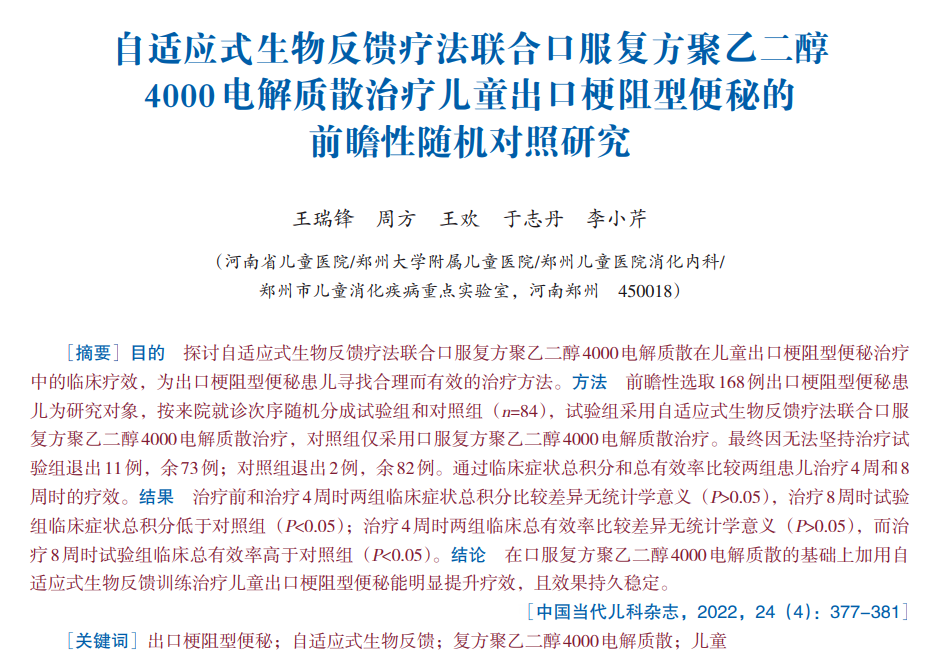 PDF(542 KB)
PDF(542 KB)


Clinical efficacy of adaptive biofeedback training combined with oral administration of compound polyethylene glycol 4000-electrolyte powder in the treatment of children with outlet obstruction constipation: a prospective randomized controlled trial
WANG Rui-Feng, ZHOU Fang, WANG Huan, YU Zhi-Dan, LI Xiao-Qin
Chinese Journal of Contemporary Pediatrics ›› 2022, Vol. 24 ›› Issue (4) : 377-381.
 PDF(542 KB)
PDF(542 KB)
 PDF(542 KB)
PDF(542 KB)
Clinical efficacy of adaptive biofeedback training combined with oral administration of compound polyethylene glycol 4000-electrolyte powder in the treatment of children with outlet obstruction constipation: a prospective randomized controlled trial

Outlet obstruction constipation / Adaptive biofeedback / Compound polyethylene glycol 4000-electrolyte powder / Child